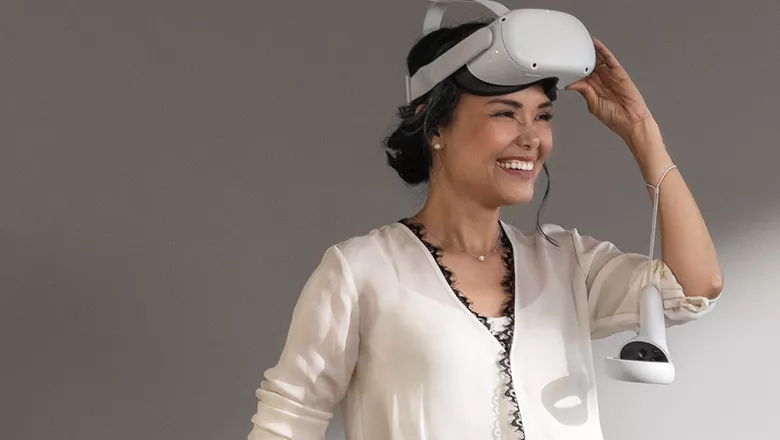
Micro-OLED displays could be coming to Meta’s VR headsets
Meta is reportedly planning some big upgrades to the displays used in its upcoming headsets, though we expect it’ll be some time before the rumored micro-OLED panel it’s working on will be used.
One issue that most VR headsets suffer from – be they budget-friendly models like the Oculus Quest 2 or a more premium device such as the Meta Quest Pro – is the ‘screen door’ effect. Because your eyes are so close to the display you can start to see gaps in the pixels that make the image appear to have black lines across it (making it look as if you’re viewing the on-screen objects through a screen door).
Meta looks set to tackle this issue soon, however, with reports indicating that it’s partnering with two South Korean manufacturers, SK Hynix and LG Display, to develop a new batch of micro-OLED displays for its headsets (via The Elec).
If true, the high pixel count of the micro-OLED panels should make the screen door effect appear much less noticeable, and may even eliminate it. What’s more, the headsets would also benefit from the better contrast and energy efficiency afforded by OLED displays, compared to the LCD displays currently used by Meta’s Quest 2 and Quest Pro.
Unfortunately, if Meta does plan to adopt this LG and SKHynix-made display, we expect that we won’t see it until whatever headset follows the Oculus Quest 3 appears. Because the Quest 3 is almost certainly releasing later this year – unless it’s hit by a delay – there’s likely not going to be enough time for those display companies to develop a new display for it, let alone manufacture it and incorporate it into the design.
It’s far more likely that we’ll see these micro-OLED displays first appear in either the Meta Quest Pro 2 or the Oculus Quest 4, both of which are at least a couple of years away. That said, we wouldn’t be surprised if the Quest 4 joined in the Quest 3 in missing out on the upgraded micro-OLED panels.
The new displays will likely be pretty pricey – too pricey for Meta’s less-expensive line of Quest devices. Because of this, we expect this will be a prosumer improvement that will stay exclusive to the Quest Pro line for a generation or two – just like the eye- and face-tracking features Meta introduced with its first Pro headset, which it has said won’t be coming to the base models until the cost of the components comes down.
We’ll have to wait and see if and when these improved panels come to light – and which models they’re used in – but hopefully, we’ll see some better screens in Meta’s headsets soon. The screen door effect can be a big obstacle to how immersive VR experiences feel for some, and improving the hardware is the only way to remove it, and make the best VR headsets even better.







![[1/3]An AI (Artificial Intelligence) sign is seen at the World Artificial Intelligence Conference (WAIC) in Shanghai, China July 6, 2023. REUTERS/Aly Song/File Photo Purchase Licensing Rights, opens new tab](https://www.ghanaiantimes.com.gh/wp-content/uploads/2024/03/Screenshot-2024-03-11-at-09-10-00-AI-talent-war-heats-up-in-Europe-e1710148354659-220x150.png)